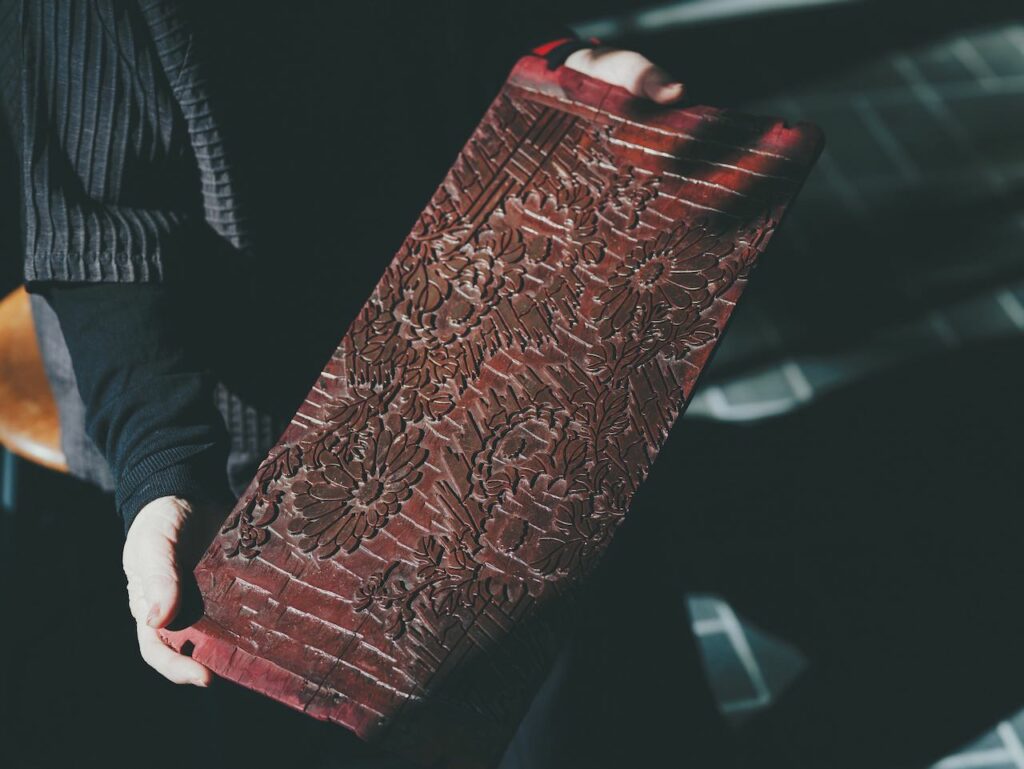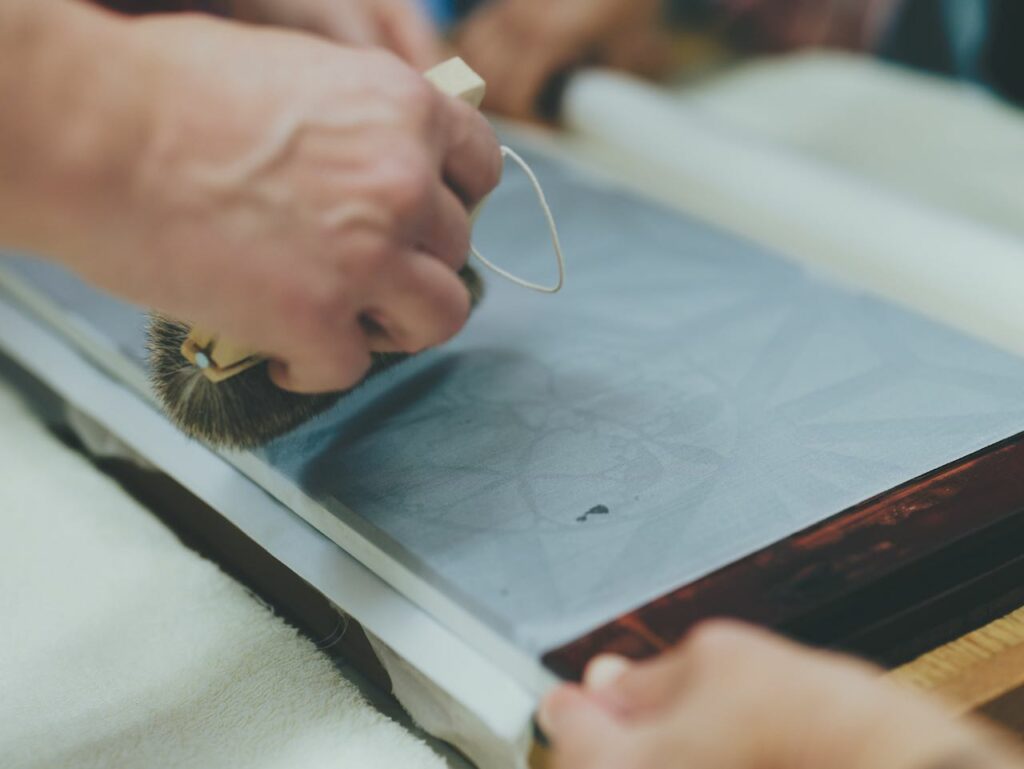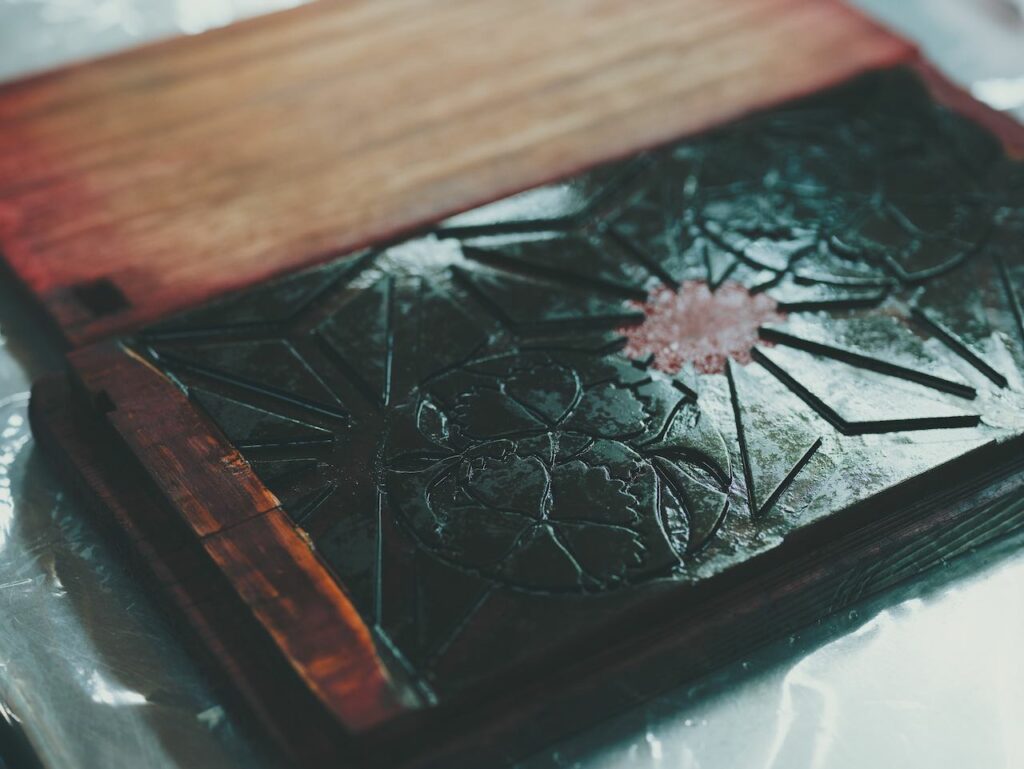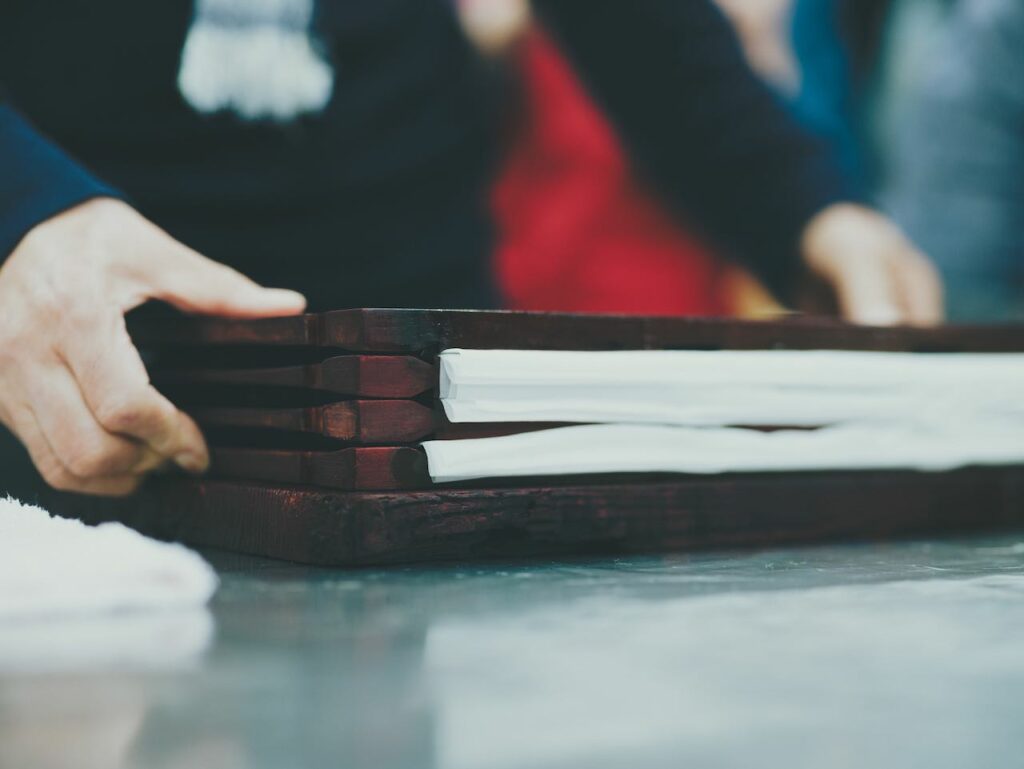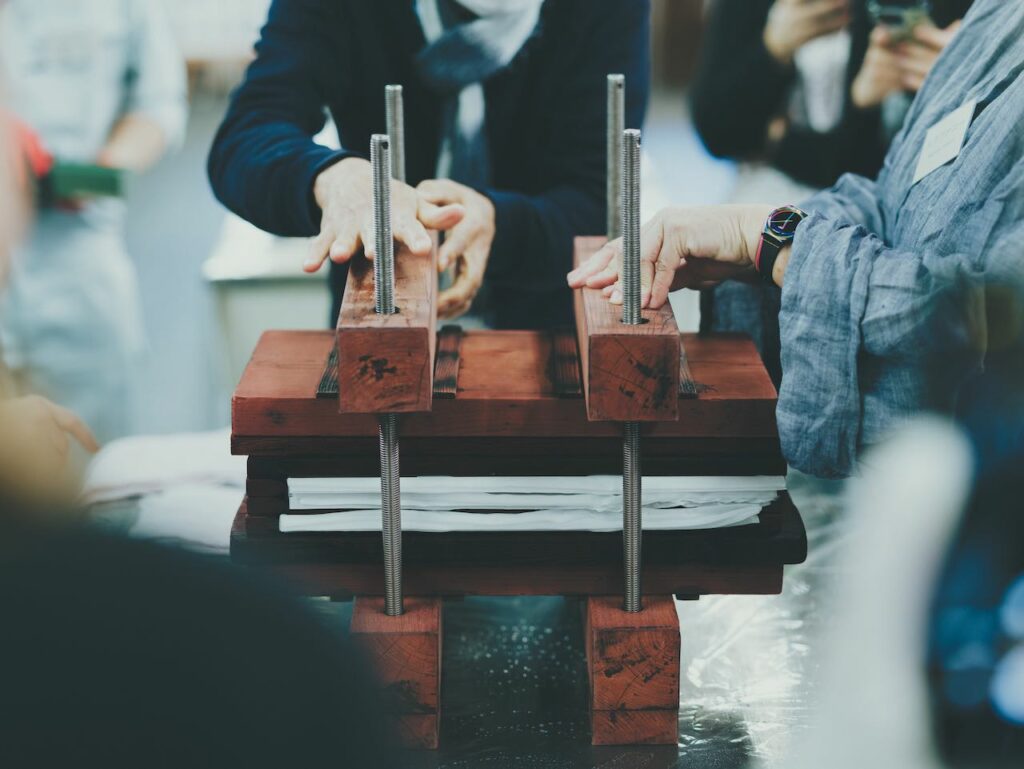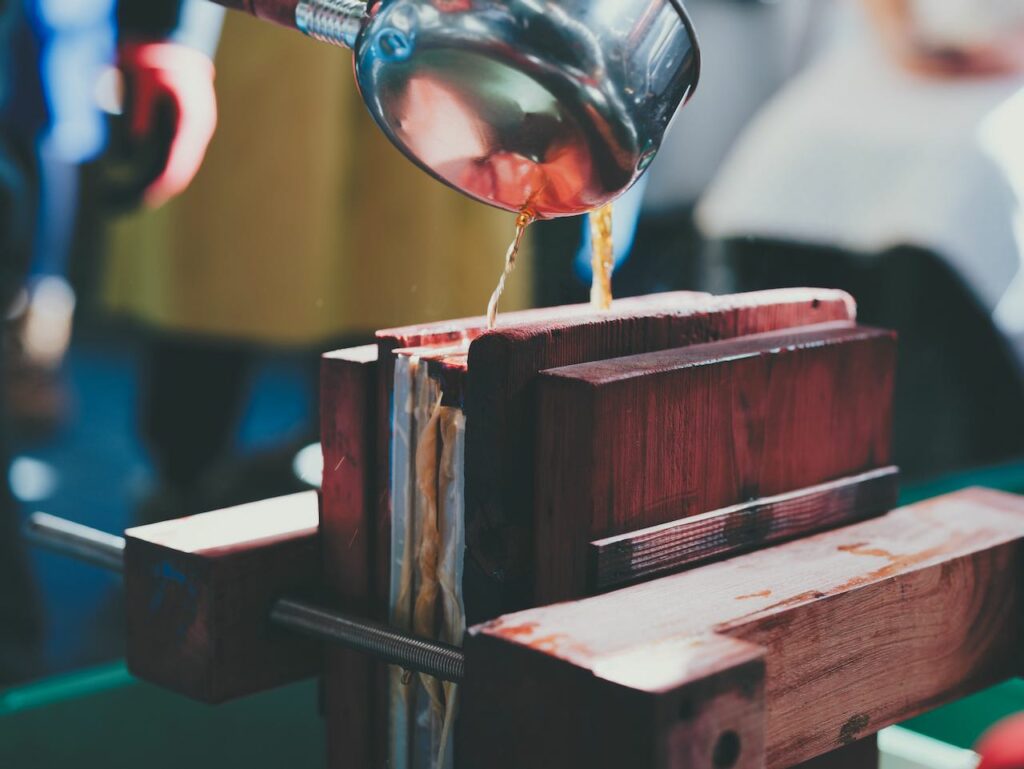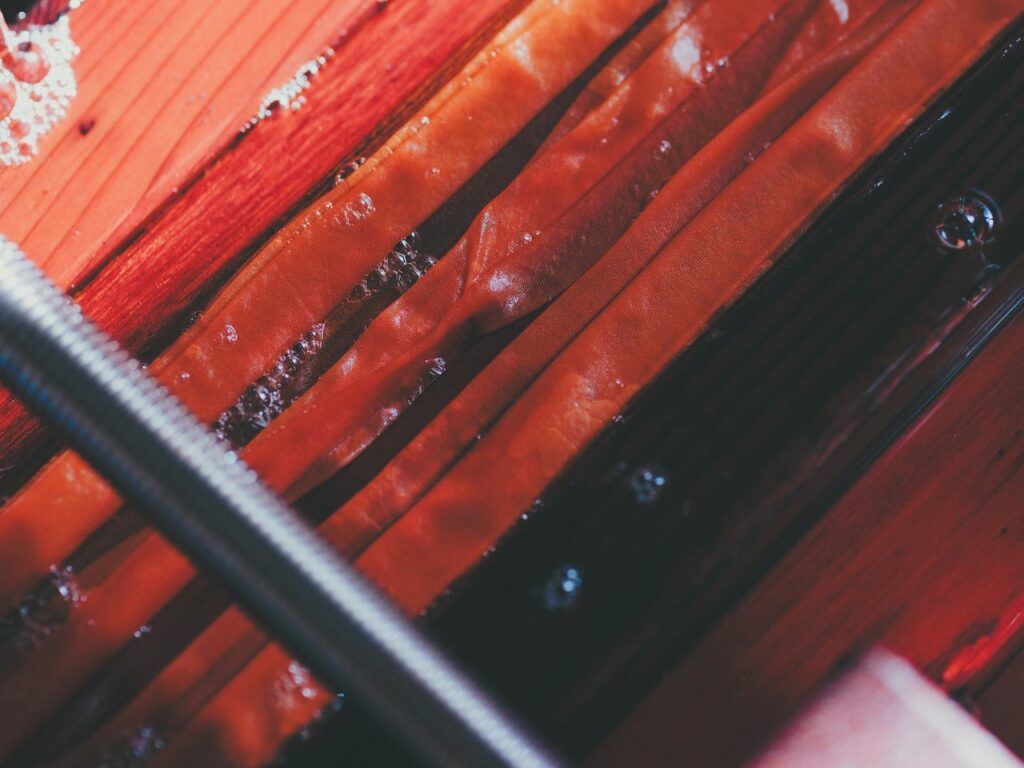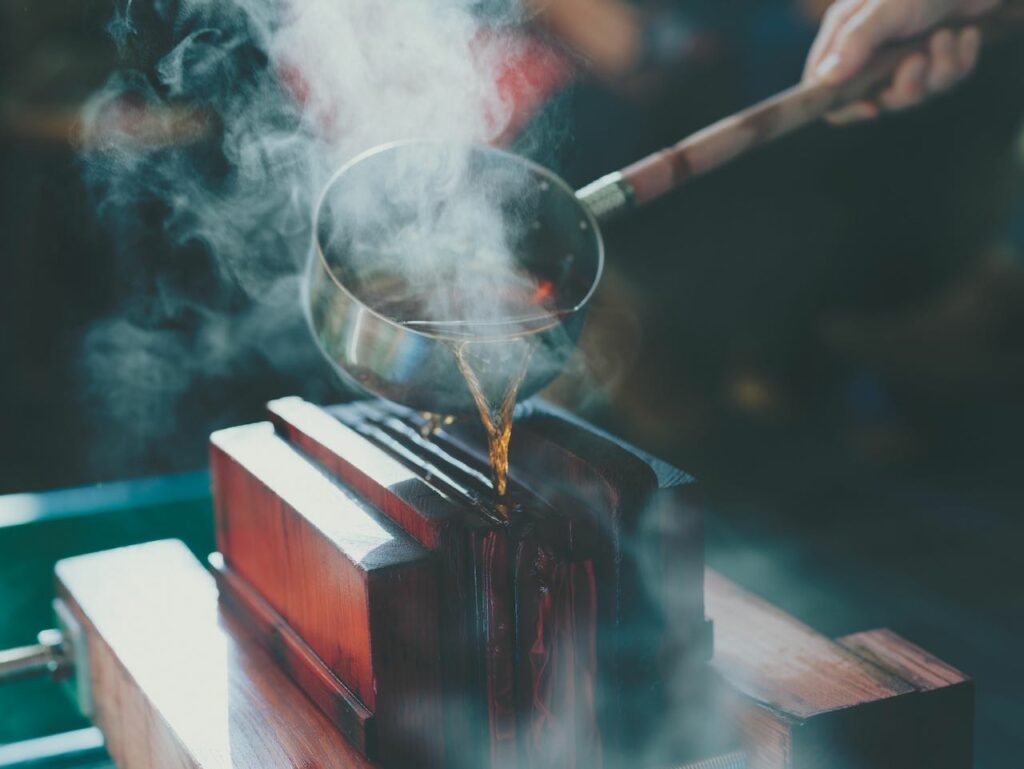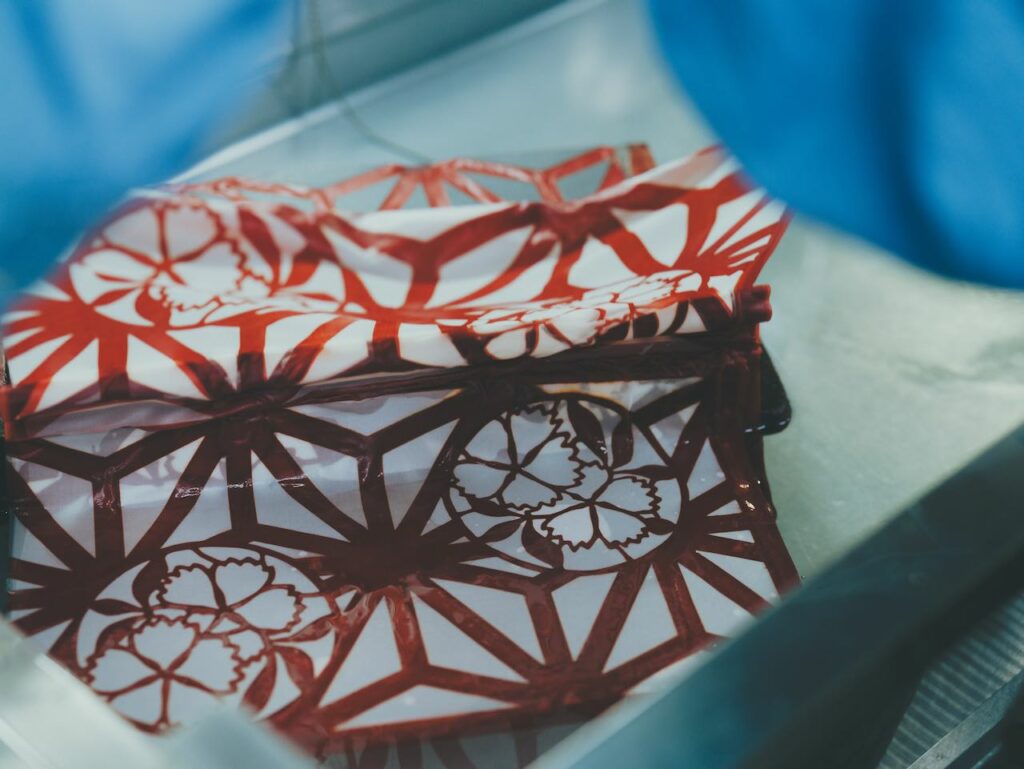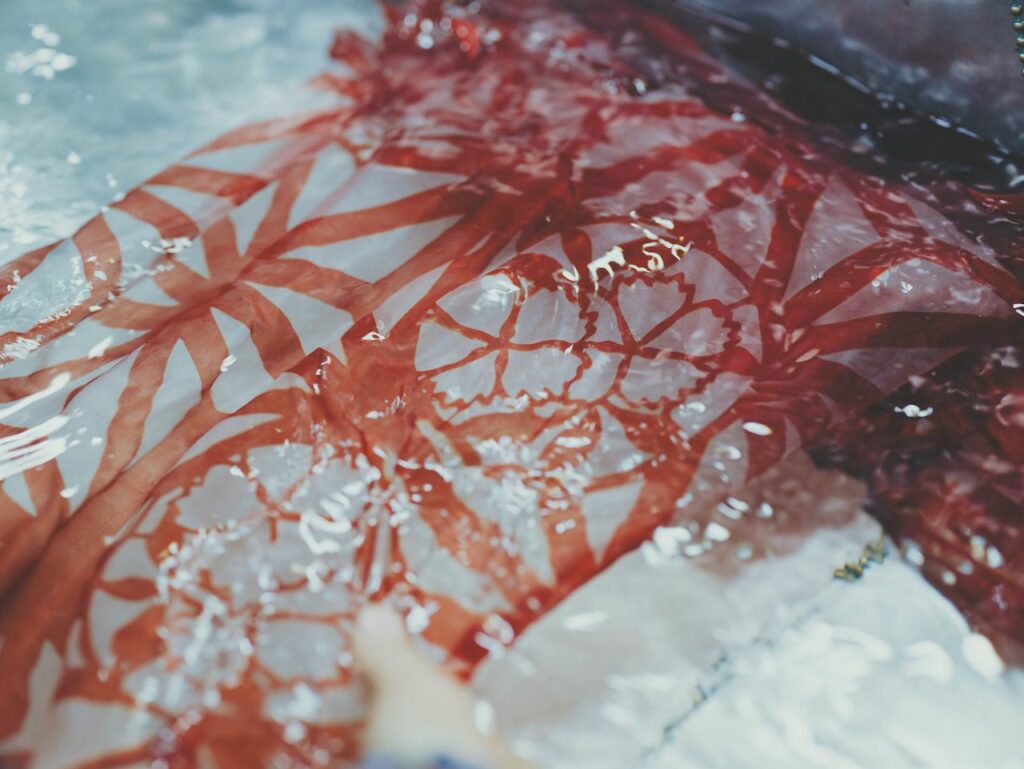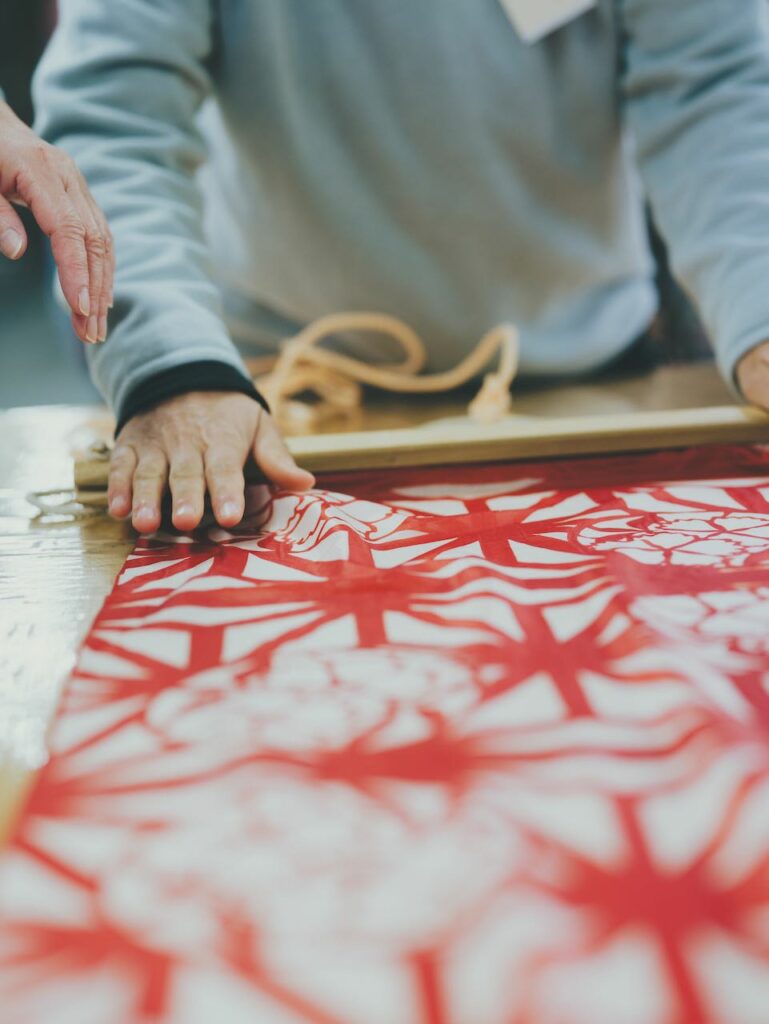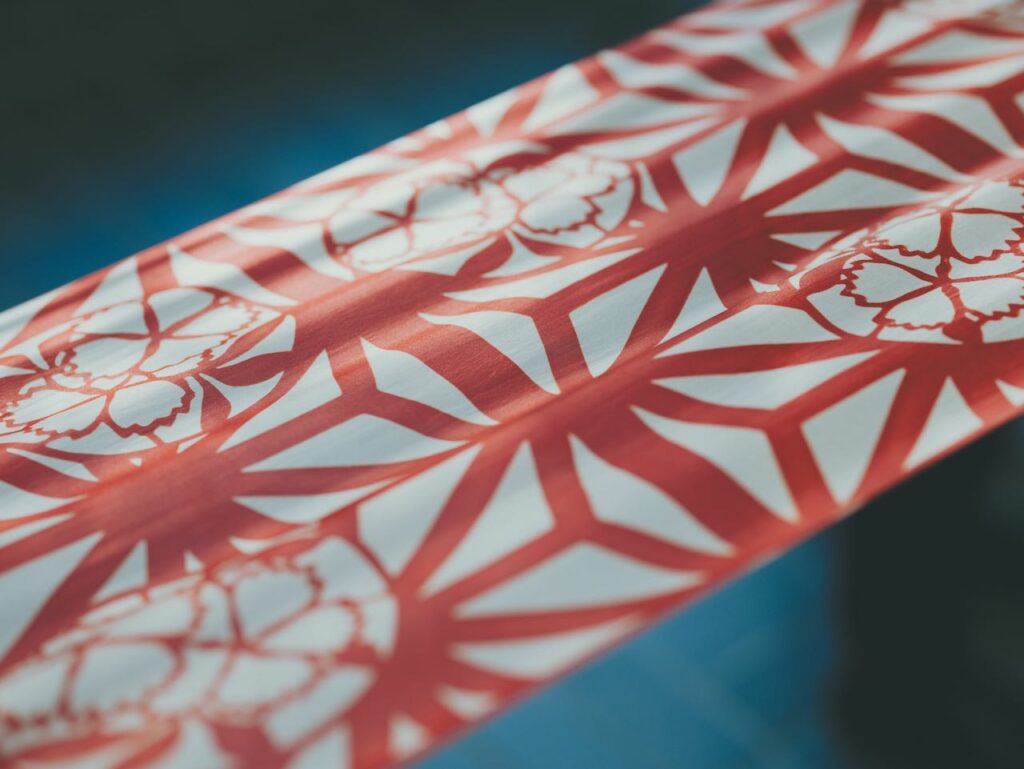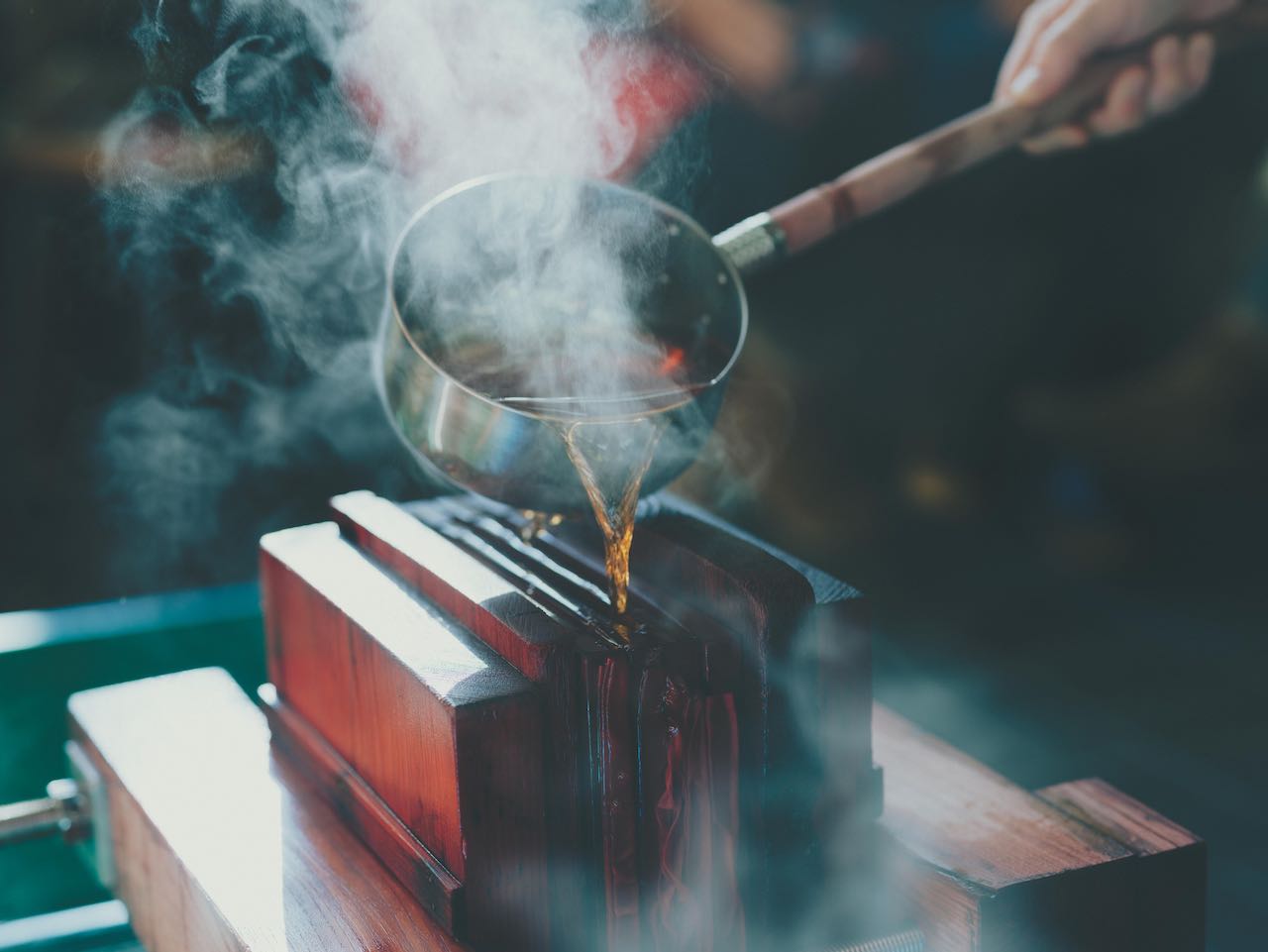
Part 1 of a 3 parts training trip to Japan by Tinctoria
We where very fortunate to discover and practise a near extinct reserve technique: Beni Itajime.
While the « classic » Itajime technique using two wood block to apply pressure on fabric to create a resist while dyeing is a very common technique nowadays, it’s much more sophisticated version using engraved wood blocks would have all but disappeared without Mrs Yoshimura’s determination and vision. Her family had been the unique depositary of that exclusive technique outside of Kyoto, and she made sure to keep it alive and share her knowledge.
She toured us through her treasured collection of kimonos with Beni Itajime linings. It could sound quite odd to us westerners to keep such a fabulous fabric where the eyes cannot see it, but then, traditional Japan is the exact opposite of bling.
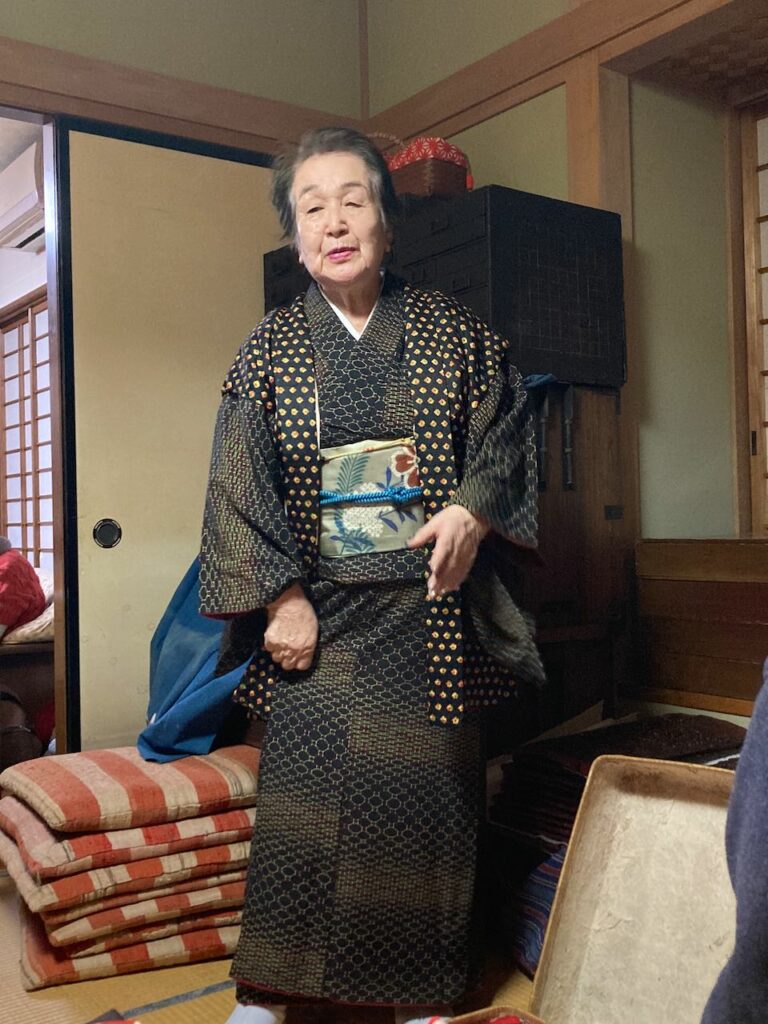
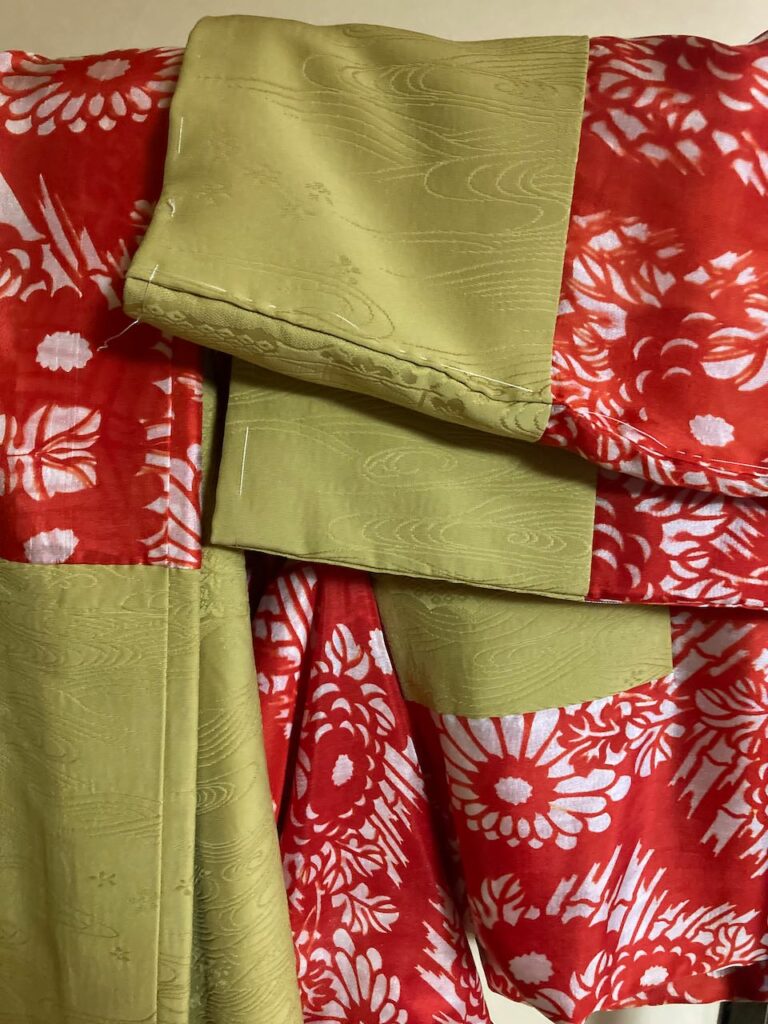
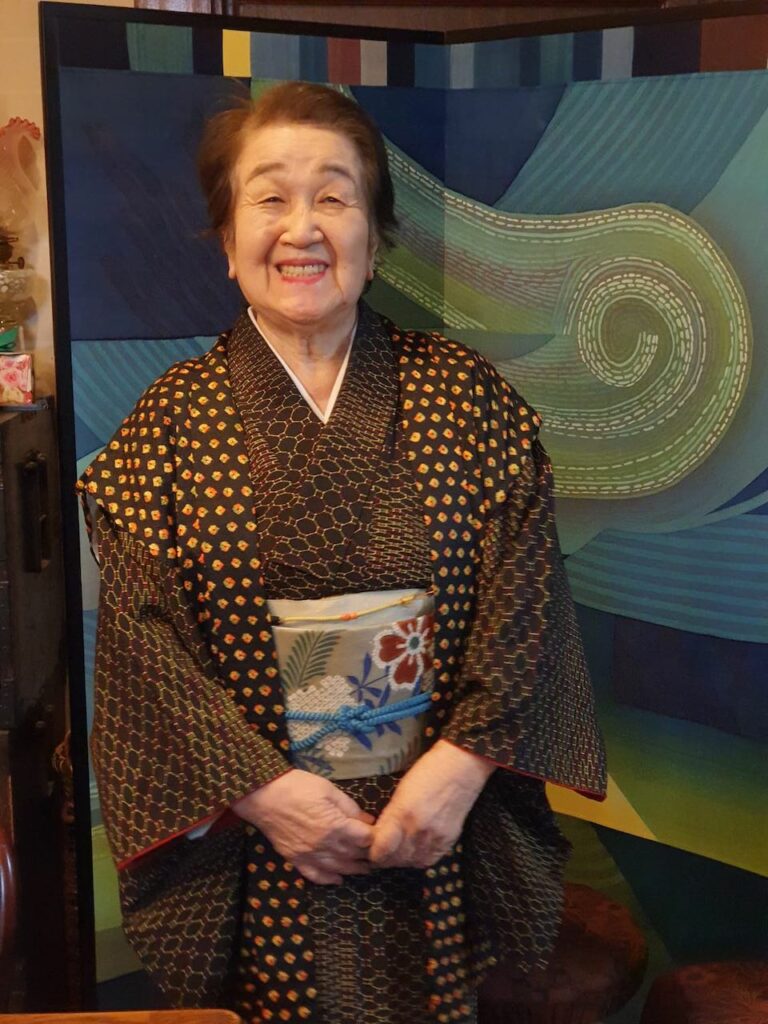
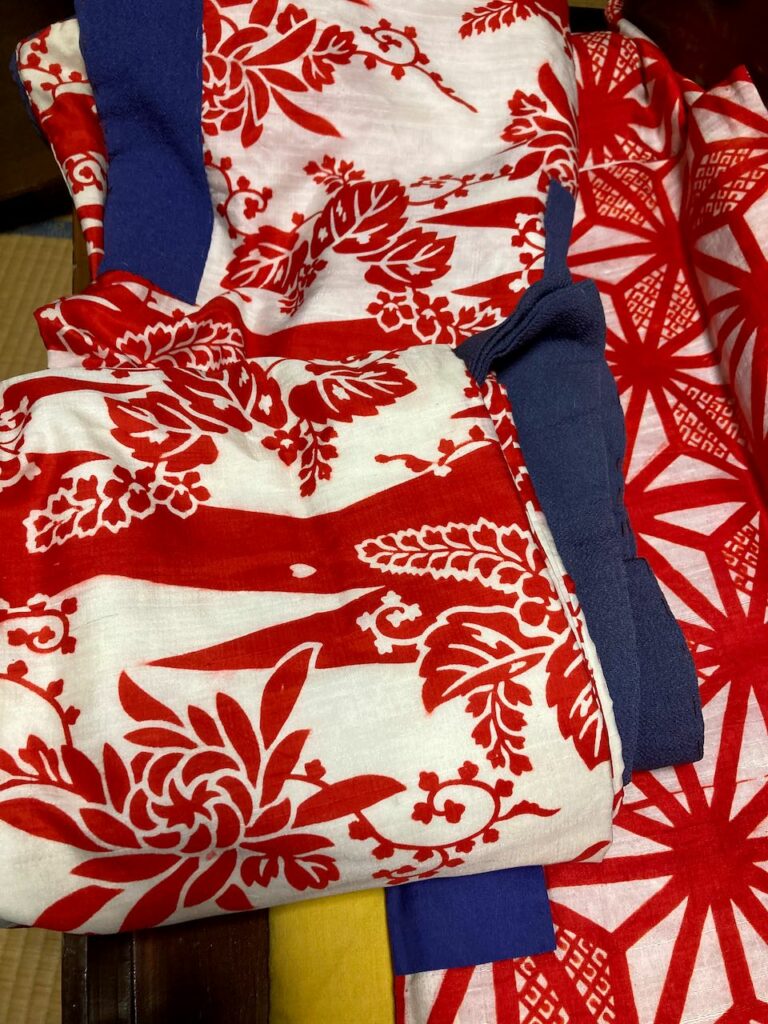
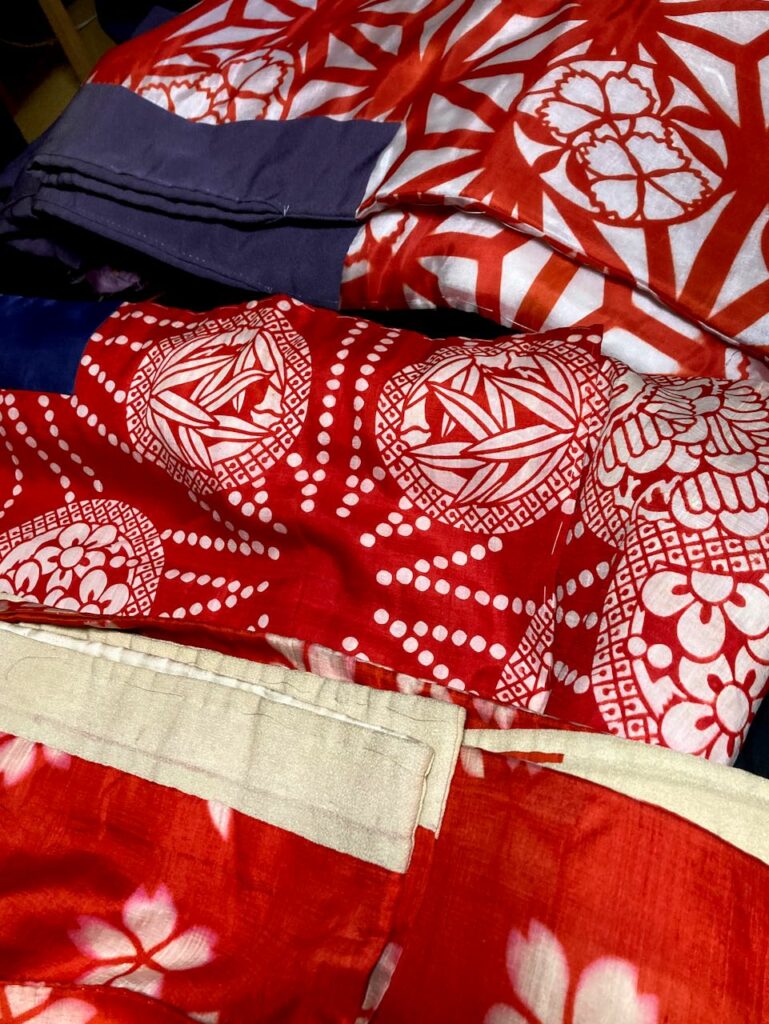
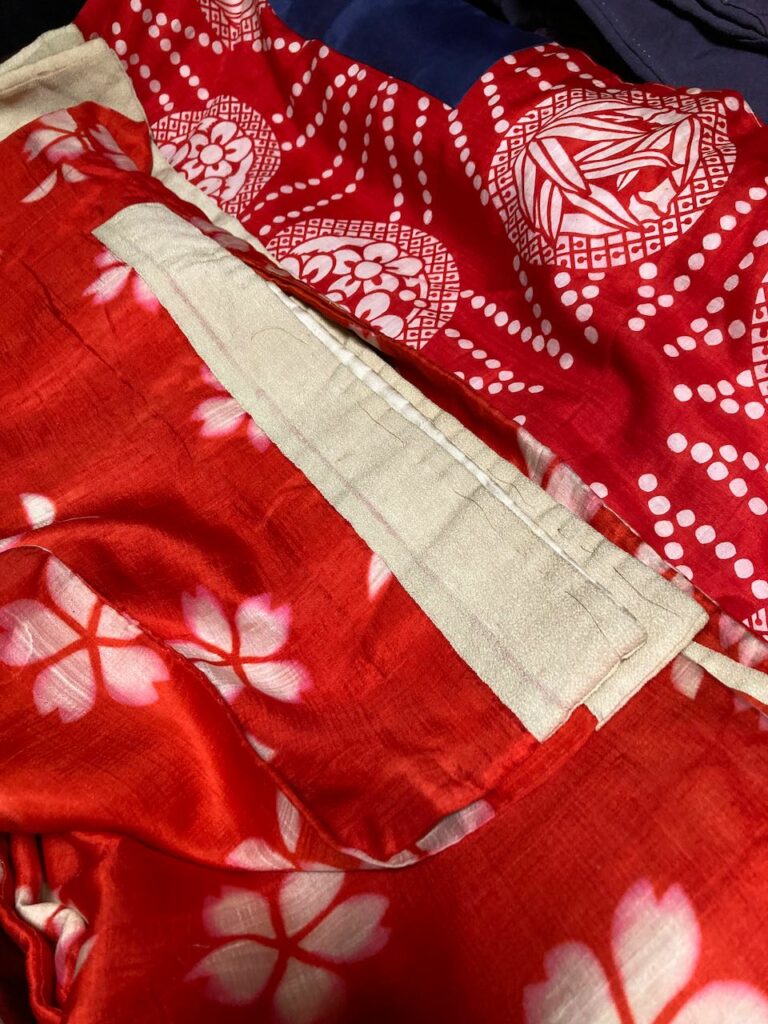
Back to the workshop: we had a chance to dye a 13 m – the standard length for a kimono – roll of silk with Beni Itajime
The fabric is folded between two engraved blocks that match perfectly on both side, and the dye is poured over the side of the bundle. While this may sound straight forward, nothing about it is. The engraving must be precise enough so that the same amount of dye reaches every part of the fabric. The pressure around the wood block must be hugge and even. The dye must be perfectly calibrated to this technique, and of course, the silk perfectly folded and wrapped around the blocks. We « did » it with the precious help and guidance of all the team in Takasaki
And as for the last bit of luxury, a photographer admirably caught those memorable instants for us.
Photo credit: Nobuki KAWAHARAZAKI
